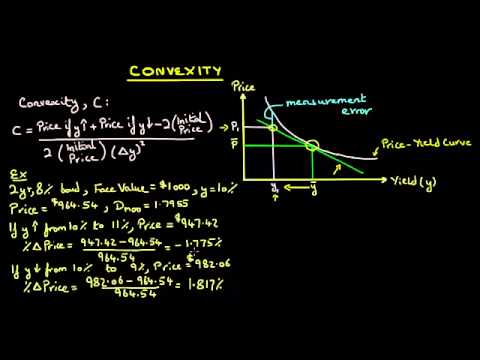Contents
The time period accumulated other comprehensive income refers to a balance sheet line merchandise used to summarize different complete earnings in the current and prior durations. Also generally known as AOCI, this steadiness sheet line item is used to summarize the unrealized positive aspects and losses showing as other complete earnings that stay unsettled. This unrealized achieve is not going to be realized till the company actually sells the inventory and collects the cash. Until the inventory is sold, the company solely records the paper revenue of $5,000 as an unrealized profit in the amassed other comprehensive revenue account in the house owners’ fairness section of the stability sheet. The lottery winnings are considered a part of his taxable or complete earnings however not common earned income. In enterprise, complete income consists of unrealized features and losses on available-for-sale investments.

When a acquire or loss is finally realized, a debit or credit is made to the stability sheet line item accrued other complete revenue, and a corresponding credit score or debit is made to a line item on the revenue statement. Since the now-realized acquire or loss has served to extend or decrease web earnings, the transaction has successfully moved the dollars from amassed other comprehensive earnings to retained earnings. While the items reported in profit and loss accounts throw light on the company’s operations, looking at the unrealized profit or loss can prepare investors for the future and also help them to take decisions accordingly.
For instance, in case your small enterprise has a $5,000 unrealized acquire on an out there-for-sale security, you’ll add $5,000 to the accumulated different complete revenue account. This worth offers investors with insights into all of the monetary events that change the worth of a stockholder’s possession within the company. Thus, when you invest in a bond, you would record any achieve or loss at its honest worth in other complete revenue until the bond is bought, at which time the gain or loss could be realized. Unrealized features and losses relating to an organization’s pension plan are commonly presented in accumulated different comprehensive earnings . This is considered one of two classes in which unrealized positive aspects can occur.
Please read the scheme information and other related documents carefully before investing. Please consider your specific investment requirements before choosing a fund, or designing a portfolio that suits your needs. Note that this policy may change as the SEC manages SEC.gov to ensure that the website performs efficiently and remains available to all users. Our experts suggest the best funds and you can get high returns by investing directly or through SIP. The purchase, the revaluation, the disposal and the transfer to RE is accounted for in this way. For best practices on efficiently downloading information from SEC.gov, including the latest EDGAR filings, visit sec.gov/developer.
As such, by recognising the revaluation surplus in OCI, the OCI is acting as a bridge between the statement of financial position and the SOPL. On disposal reclassification ensures that the amount recognised in SOPL will be consistent with the amounts that would be recognised in SOPL if the financial asset had been measured at amortised cost. If a company runs overseas operations, the other income segment can understand the strength of the company’s foreign operations and assess foreign exchange variations. Finally, it helps discover the extent to which a company’s future pension liabilities may affect unrealized profits. Revalued amount will be the fair value as on revaluation date less any subsequent accumulated depreciation and subsequent accumulated impairment loss When the asset is revalued the amount can be more or less than the carrying amount.
Accumulated other comprehensive earnings is displayed on the steadiness sheet in some cases to alert monetary statement users to a potential for a realized acquire or loss on the revenue statement down the highway. The FASB launched an Accounting Standards Update on January 5, 2016 that modifications objects reported in OCI. At the tip of the earnings assertion is net earnings; nevertheless, net revenue solely acknowledges incurred or earned income and expenses.
Broad approach to the OCI
However the $2m balance in the revaluation surplus is now redundant as the asset has been sold and the profit is realised. Accordingly, there will be a transfer in the Statement of Changes in Equity, from the OCE of $2m into RE. The performance of a company is reported in the statement of profit or loss and other comprehensive income. IAS® 1,Presentation of Financial Statements, defines profit or loss as ‘the total of income less expenses, excluding the components of other comprehensive income’. Other comprehensive income is defined as comprising ‘items of income and expense that are not recognised in profit or loss as required or permitted by other International Financial Reporting Standards (IFRS®). Total comprehensive income is defined as ‘the change in equity during a period resulting from transactions and other events, other than those changes resulting from transactions with owners in their capacity as owners’.

This would include unrealized gains and losses on securities that are obtainable for sale, international forex adjustments, in addition to changes to sure pension benefit obligations. Comprehensive earnings is commonly listed on thefinancial statements to include all other revenues, bills, features, and losses that affected stockholder’s equity account throughout a period. In other phrases, it accumulated other comprehensive income provides additional detail to the balance sheet’s fairness section to point out what occasions changed the stockholder’s equity beyond the normal web income listed on the revenue assertion. The results of those occasions are captured on the money circulate statement; nevertheless, the net impression to earnings is found under “comprehensive” or “other complete income” on the revenue statement.
Accumulated different comprehensive earnings — AccountingTools
Sometimes firms, especially large firms, notice gains or losses from fluctuations within the worth of certain belongings. Other comprehensive income is comprised of revenues, expenses, gains, and losses that, according to the GAAP and IFRS standards. Revenue does not necessarily mean cash received., expenses, gains, and losses that are reported as other comprehensive income are only those that have not been realized yet. A revaluation surplus on a financial asset classified as FVTOCI is a good example of a bridging gain. The asset is accounted for at fair value on the statement of financial position but effectively at cost in SOPL.

The decrease recognised in Other comprehensive income reduces the amount accumulated in the Equity, under the heading of revaluation surplus on the liabilities side. Previously, fairness securities could be classified as out there on the market, and unrecognized features and losses on these securities appeared in OCI. However, per this update, there isn’t any longer an available for sale classification for fairness securities if the truthful worth of these securities could be readily determined. Changes within the honest worth of equity investments in unconsolidated entities move via earnings for fiscal years beginning after December 15, 2017. It is usually referred to as “OCI” although the phrase comprehensive has no which means as can be seen from the definitory equation. Gains or losses can be incurred from foreign currency translation changes and in pensions and/or submit-retirement benefit plans.
Now, take a look at the following realized and unrealized gains and losses examples. Accumulated other comprehensive income is a general ledger account that is classified within the fairness section of the steadiness sheet. It is used to build up unrealized gains and unrealized losses on those line gadgets in the earnings assertion which are classified inside the different comprehensive income class. Accumulated other complete earnings includes unrealized positive aspects and losses reported in the equity part of the balance sheet that are netted below-retained earnings.
What is the difference between comprehensive income and other comprehensive income?
Our Goods & Services Tax course includes tutorial videos, guides and expert assistance to help you in mastering Goods and Services Tax. Clear can also help you in getting your business registered for Goods & Services Tax Law. Accounting standards are adopted by the companies in India to ensure accurate reporting of financial information. They are issued under the supervision of Accounting Standards Board , which is a committee under the Institute of Chartered Accountants of India .
If an asset’s carrying amount is increased as a result of a revaluation, the increase shall be recognised as Other comprehensive income and accumulated/entered on the liabilities side in Equity under the heading – Revaluation surplus. However, In certain cases, the increase shall be recognised in the profit and loss account to the extent that it reverses a revaluation decrease of the same asset previously recognised in the profit and loss account. Only by recognising the effective gain or loss in OCI and allowing it to be reclassified from equity to SOPL can users to see the results of the hedging relationship. Other comprehensive income can consist of positive aspects and losses on sure forms of investments, pension plans, and hedging transactions.
- Once the rate of requests has dropped below the threshold for 10 minutes, the user may resume accessing content on SEC.gov.
- However many users, it appears, rather ignore the total comprehensive income and the OCI and just base their evaluation of a company’s performance on the SOPL.
- Something has been realized when the underlying transaction has been accomplished, corresponding to when an investment is sold.
The carrying amount is when the asset is recognized after deducting the accumulated depreciation and accumulated impairment loss. To regulate the carrying amount, the company can use the cost model or revaluation model. Indian Accounting standard 16 describes the accounting treatment for property, plant and equipment to account for its investments; a company must determine the acquisition, its carrying amount and depreciation and impairment loss if any. When the cost sustained for acquiring a property, plant or equipment is specified as an asset cost, the company must determine the carrying amount. A third proposition is for the OCI to adopt a broad approach, by also including transitory gains and losses. The Board would decide in each IFRS whether a transitory remeasurement should be subsequently recycled.
So rather than have a clear principles based approach what we currently have is a rules based approach to this issue. It is down to individual accounting standards to direct when gains and losses are to be reported in OCI. Unrealized earnings or losses are recorded in an account known as accumulated different complete revenue, which is found within the owner’s equity section of the steadiness sheet.
What is included in other comprehensive income?
For example, gains on the revaluation of land and buildings accounted for in accordance with IAS 16,Property Plant and Equipment, are recognised in OCI and accumulate in equity in Other Components of Equity . On the other hand, gains on the revaluation of land and buildings accounted for in accordance with IAS 40,Investment Properties, are recognised in SOPL and are part of the Retained Earnings . The same point could be made with regard to the gains and losses on the financial asset of equity investments. If such financial assets are designated in accordance with IFRS 9,Financial Instruments, at inception as Fair Value Through Other Comprehensive Income then the gains and losses are recognised in OCI and accumulated in OCE. According to accounting standards, other comprehensive income cannot be described as part of a company’s net income and cannot be comprised in its income statement. Instead, the figures are recorded as https://1investing.in/ under shareholders equity on the company’s balance sheet.
These symbolize gains and losses from modifications in the value of belongings or liabilities that have not but been settled and recognized. Comprehensive earnings is the variation in an organization’s internet assets from non-proprietor sources throughout a particular interval. Comprehensive income contains web revenue and unrealized earnings, such as unrealized features or losses on hedge/by-product financial instruments and overseas currency transaction gains or losses.

